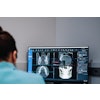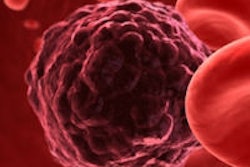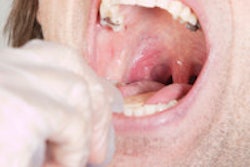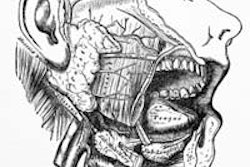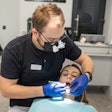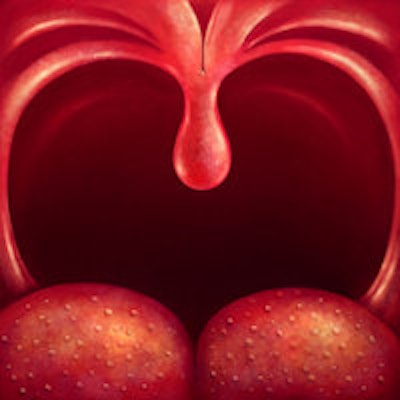
Routine esophageal screening can increase the early detection of second primary esophageal squamous cell carcinoma and is particularly recommended for patients with head and neck squamous cell carcinoma (HNSCC), according to a study in JAMA Otolaryngology -- Head and Neck Surgery, March 21, 2013).
Patients with HNSCC have a high prevalence of second primary esophageal squamous cell carcinoma (ESCC), according to the study authors, from Chang Gung University College of Medicine in Taiwan. Some 5% to 15% of patients with HNSCC ultimately develop synchronous or consecutive ESCC, they noted.
Patients with HNSCC are also at risk of developing second primary neoplasms, particularly in the head and neck, lung, and esophagus. This has been attributed to "field cancerization" -- histologically abnormal epithelium adjacent to tumor tissue -- in the mucous membranes of these regions, likely from common exposure to tobacco, alcohol, and betel nut, according to the researchers.
The number of second primary tumors in Taiwan is far greater than in the U.S. or Europe, they added. Most of the Taiwan patients in this study drank alcohol, smoked, and chewed betel nut, which is considered a risk factor for developing esophageal cancer.
For this retrospective study, the researchers analyzed 3,053 newly diagnosed HNSCC patients at Kaohsiung Chang Gung Memorial Hospital between January 2004 and December 2010.
Following completion of treatment, all HNSCC patients were advised to have regular esophageal follow-ups every six months for three years. Patients in the study were divided into five categories based on tumor location: nasal cavity, oral cavity, oropharynx, larynx, or hypopharynx. They included 67 patients (2.2%) with nasal cavity cancer, 1,774 patients (58.1%) with oral cavity cancer, 514 patients (16.8%) with oropharyngeal cancer, 297 patients (9.7%) with laryngeal cancer, and 401 patients (13.1%) with hypopharyngeal cancer.
The patients were then divided into two groups based on whether or not they had received routine esophageal screenings, and the two groups were compared. In total, 1,592 patients had routine esophageal screening, and 1,461 patients did not.
The researchers found 115 second primary ESCC cases; of those, 44 were diagnosed in the nonroutine screening group, and 71 were diagnosed in the routine screening group.
The 115 patients with second primary ESCC were further analyzed. In the routine screening group, approximately 41% had an early T classification of ESCC, but in the nonroutine screening group, only about 20% had an early T classification; the difference between the groups was significant (p = 0.02).
The overall prevalences of second primary ESCC were 0.8% for the oral cavity, 6.2% for the oropharynx, 4.0% for the larynx, and 14.2% for the hypopharynx. Patients with oropharyngeal cancer, supraglottic cancer, transglottic cancer, and hypopharyngeal cancer (p < 0.001 for all) had a much higher risk of developing second primary ESCC.
The prevalence of second primary ESCC among the routine screening group (4.5%) was significantly higher than that among the nonroutine screening group (3.0%). Furthermore, the prevalence of second primary ESCC associated with oral cavity cancer cases among the routine screening group (1.2%) was significantly higher than that among the nonroutine screening group (0.3%).
Although the researchers found no significant differences at other sites of HNSCC between the two groups, they detected a trend toward a higher prevalence of second primary ESCC among the routine screening group in patients with laryngeal cancer (4.2% versus 3.8%), oropharyngeal cancer (6.5% versus 5.9%), and hypopharyngeal cancer (15.9% versus 12.3%).
"Therefore, patients with oropharyngeal, supraglottic, transglottic, and hypopharyngeal cancers should be aware of the possibility of esophageal lesions," the researchers wrote.
Routine esophageal screening is recommended for patients with these types of cancers because of the higher prevalence of second primary ESCC, they concluded.



